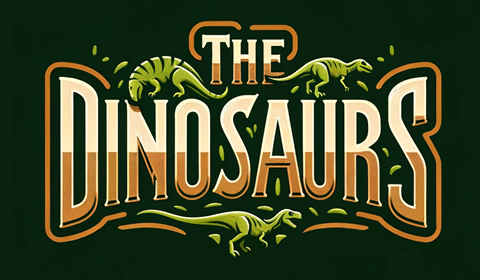Among the jurassic giants who once roamed earth was Jobaria. It’s a dinosaur whose very name conjures images of mythical beasts and forgotten worlds. This journey isn’t just about size and scale; it’s about understanding a creature that once was a vital part of our planet’s history.
Jobaria Key Facts
| Keyword | Fact |
|---|---|
| Pronunciation | joh-bahr-ee-uh |
| Meaning of name | Mythical Giant Beast |
| Group | Eusauropoda |
| Type Species | Jobaria tiguidensis |
| Diet | Herbivore |
| When it Lived | 163.5 to 145.0 MYA |
| Period | Middle-Late Jurassic |
| Epoch | Bathonian to Oxfordian |
| Length | 52.0 to 60.0 feet |
| Height | Approximately 15 feet at the hip |
| Weight | 18.0 to 24.7 tons |
| Mobility | Moved on all four |
| First Discovery | 1997 by team of paleontologists led by Paul Sereno |
| Location of first find | MNN TIG3 |
| First Described by | 1999 by Paul Sereno, Allison Beck, Didier Dutheil, Hans Larsson, Gabrielle Lyon, Bourahima Moussa, Rudyard Sadleir, Christian Sidor, David Varricchio, Gregory Wilson and Jeffrey A. Wilson |
| Holotype | Tiourarén Formation, Niger |
Jobaria Origins, Taxonomy and Timeline
The name Jobaria tiguidensis is steeped in myth and legend, derived from ‘Jobar,’ a creature in Tamashek mythology, and tiguidensis refers to a cliff nearby the original site. This name not only reflects the dinosaur’s grandeur but also connects it to the rich cultural tapestry of the region of Niger where it was discovered.
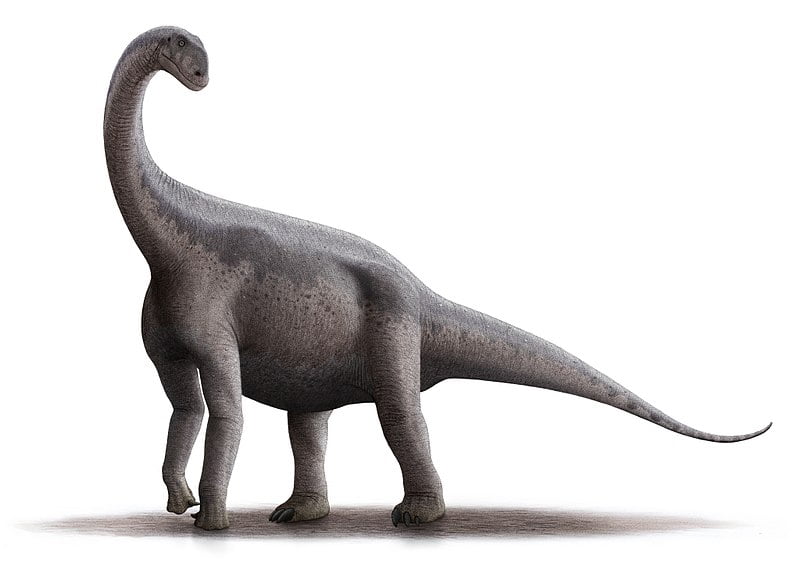
Jobaria belongs to the group known as Eusauropoda (Dinosauria: Saurischia), those long-necked, herbivorous giants that often dominate our imagination when we think of dinosaurs. However, it’s not just any sauropod; it’s the type species of its own genus, Jobaria tiguidensis, aand unique branch in the dinosaur family tree, likely closely related to the european Turiasaurus.
The timeline of Jobaria is a journey through the Middle Jurassic, specifically from 168.3 to 157.3 million years ago. This era was a chapter in Earth’s history where dinosaurs were flourishing, and ecosystems were teeming with diverse life forms.
Listen to Pronunciation
If you are curious, check out this video to hear how ‘Jobaria’ is pronounced.
Discovery & Fossil Evidence

In the fall of 1997, a remarkable discovery was made during a four-month expedition to the Sahara desert. Led by the US paleontologist Paul Sereno, this journey into the heart of the desert unveiled a dinosaurian treasure. Among these finds was Jobaria, unearthed in a mass-death site within the Tiourarén Formation of Niger. What made this discovery extraordinary was the condition of the fossils; over 95% of its skeleton was preserved, making it one of the most complete sauropods ever found.
The naming of this genus is a nod to local mythology. ‘Jobaria’ is derived from ‘Jobar,’ a mythical giant beast in Tasmasheq folklore. The locals once believed the dinosaur bones to be the remains of this legendary creature. The specific name, ‘tiguidensis,’ pays homage to the cliff of Tiguidi, near the site where Jobaria was discovered, linking the dinosaur indelibly to its place of origin.
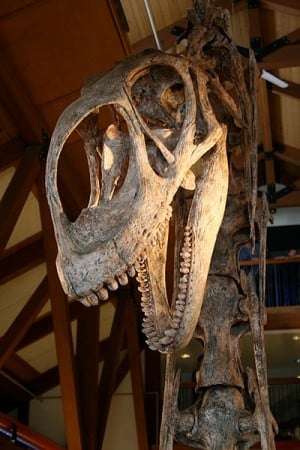
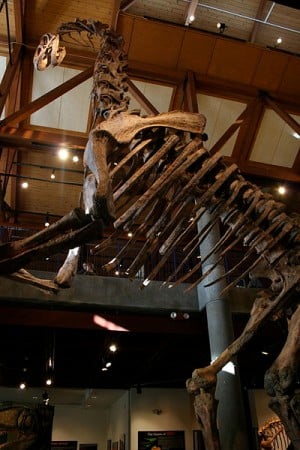
Initially, the sediments where Jobaria was found were thought to date back to the early Cretaceous Period, approximately 132.0 million years ago. However, a re-interpretation of these sediments suggested a Middle/Late Jurassic age, dating Jobaria to between 168.3 to 157.3 million years ago. This shift in understanding not only repositioned Jobaria in the timeline but also provided a clearer view of the world it inhabited.
Jobaria Size and Description
Jobaria was a primitive sauropod that lumbered across the jurassic landscape. This early member of the sauropod family showcases the early stages of evolution that would eventually lead to the more specialized and colossal dinosaurs that have captured our collective imagination.
Description of Jobaria
As a primitive sauropod, Jobaria’s design was a far cry from the complexity that would characterize its later cousins. Its structure was more basic, lacking the elaborate vertebrae and the iconic whiplash tails that would become hallmarks of the sauropod lineage in the Late Jurassic and Cretaceous Periods. Dinosaurs like Diplodocus and Apatosaurus, which would not appear on the scene for many millions of years, evolved these features as adaptations to their environments. Jobaria, meanwhile, represents an earlier blueprint—a glimpse into the formative years of Sauropod evolution.
Size and Weight of Type Species
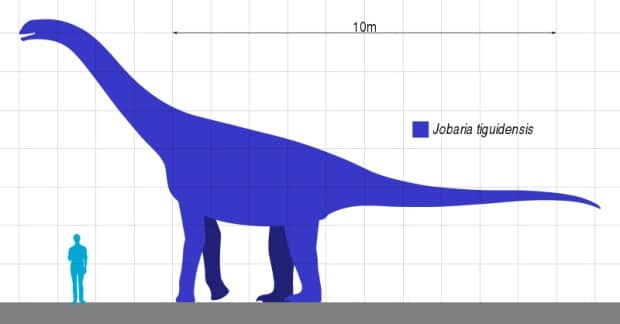
In terms of physical dimensions, Jobaria was formidable. The initial estimates pegged it at a length of 60.0 feet and a weight of around 24.7 US tons. However, Gregory Paul’s 2016 reassessment provided a more conservative figure, suggesting that Jobaria might have measured closer to 52.0 feet in length and weighed approximately 18.0 tons. This variance in estimates is a common theme in paleontology, reflecting the evolving nature of our understanding as new methods and more fossils come to light. Despite these differences, what remains clear is that Jobaria was a significant presence in its Jurassic environment, a testament to the diversity and grandeur of sauropods even at this early stage in their evolutionary history.
The Ultimate Dino Quiz
Do you want to test your knowledge on dinosaurs? Then try this Ultimate Dino Quiz! Don’t worry if you get some of the answers wrong, and look at it as an opportunity to refresh and improve your knowledge!
Don’t forget to try our other games as well!
Interesting Points about Jobaria
- Jobaria’s discovery in Niger adds a significant piece to the puzzle of dinosaur distribution across continents.
- Unlike some sauropods, Jobaria’s neck was relatively short and sturdy, suggesting a different feeding strategy.
- The preservation of Jobaria’s fossils provides valuable insights into the Middle-Late Jurassic ecosystem.
- Jobaria’s name, rooted in mythology, highlights the intersection of science and cultural heritage.
Jobaria in its Natural Habitat
Imagine the world of Jobaria, a landscape that was as dynamic as it was diverse. The Middle Jurassic was a time of significant geological and climatic changes, shaping the environments that Jobaria called home. This era was marked by warm climates, lush vegetation, and a variety of ecosystems ranging from dense forests to open plains.
As a herbivore, Jobaria’s diet consisted mainly of plants. Its height and long neck would have allowed it to reach vegetation that other herbivores couldn’t, making it a crucial part of its ecosystem. The way it moved, steadily on all fours, suggests a lifestyle adapted to browsing rather than running.
Jobaria’s role in its habitat might have been more than just a consumer of plants. As a large herbivore, it could have shaped the landscape, creating pathways and clearings, and even influencing the types of vegetation that thrived. Its social behavior, whether it was a solitary wanderer or a herd animal, would have also played a role in the dynamics of its environment.
Contemporary Dinosaurs
In the lush, verdant landscapes of ancient Africa, the gentle giant Jobaria towered above many of its contemporaries. This long-necked behemoth, with its towering frame and serene demeanor, was like the benevolent monarch of its jurassic kingdom. Among its neighbors was Afrovenator, a predator whose size was dwarfed by Jobaria. While Afrovenator was no small creature, it was like a cunning fox compared to the elephantine Jobaria. Their interactions, if any, would have been a tense dance of power and agility, with Afrovenator possibly eyeing younger or weaker Jobarias as potential prey.
In this ancient world, the spiked and armored Kentrosaurus also roamed. Smaller than Jobaria, this spiky contemporary might have resembled a prickly underbrush next to Jobaria’s towering tree. Their paths likely crossed often, but with Kentrosaurus’ armor and Jobaria’s sheer size, any direct competition was unlikely. Instead, they coexisted, perhaps sharing the verdant feeding grounds, with Jobaria browsing the high tree canopies and Kentrosaurus nibbling on lower vegetation.
Another contemporary, Dicraeosaurus, shared a more direct kinship with Jobaria. Both being herbivores and roughly the same size, they might have been companions in the ancient forests, their long necks reaching for the sun-dappled leaves. However, this kinship didn’t preclude competition. In times of scarcity, these gentle giants might have vied for the same precious resources, their massive bodies casting shadows over the contested greenery.
In this jurassic world, Jobaria stood as a central figure, a testament to the grandeur of ancient life. Its interactions with contemporaries like Afrovenator, Kentrosaurus, and Dicraeosaurus painted a vivid picture of an ecosystem where size, strategy, and survival were intricately interwoven. Each creature, in its own way, contributed to the dynamic and vibrant world that Jobaria called home, a world where every day was a testament to the awe-inspiring diversity of life on our planet.
Frequently Asked Questions
Jobaria refers to a mythical beast of the Tamasheq culture, reflecting the cultural heritage of its discovery site.
This majestic creature lived during the Middle/Late Jurassic, approximately 168.3 to 157.3 million years ago.
As a herbivore, Jobaria’s diet consisted of plants.
It moved on all four legs, a locomotion style that provided stability and efficiency.
The first fossils of Jobaria were unearthed in the Tiourarén Formation in Niger.
The dinosaur was discovered by a group of paleontologists led by Paul Sereno in 1997.
Sources
The information in this article is based on various sources, drawing on scientific research, fossil evidence, and expert analysis. The aim is to provide a comprehensive and accurate overview of Jobaria. However, please be aware that our understanding of dinosaurs and their world is constantly evolving as new discoveries are made.
- https://pubmed.ncbi.nlm.nih.gov/10558986/
- https://www.ncbi.nlm.nih.gov/pmc/articles/PMC5417094/
- https://www.sciencedirect.com/science/article/abs/pii/S0031018208005919
- https://royalsocietypublishing.org/doi/10.1098/rsos.150636#d1e810
- https://www.tandfonline.com/doi/full/10.1080/14772019.2011.598577?casa_token=3YHqPgTxSV0AAAAA%3A9N0rfrltlnrNK7BOe2pPE1Umv4rUa5wy_fUG2HNO5yxdb9-FzkvYUDG36jHRsRyQd4wKEEG2dmPtB1Y
Article last fact-checked: Joey Arboleda, 11-04-2023
Featured Image Credit: I, Steveoc 86, CC BY 2.5, via Wikimedia Commons
